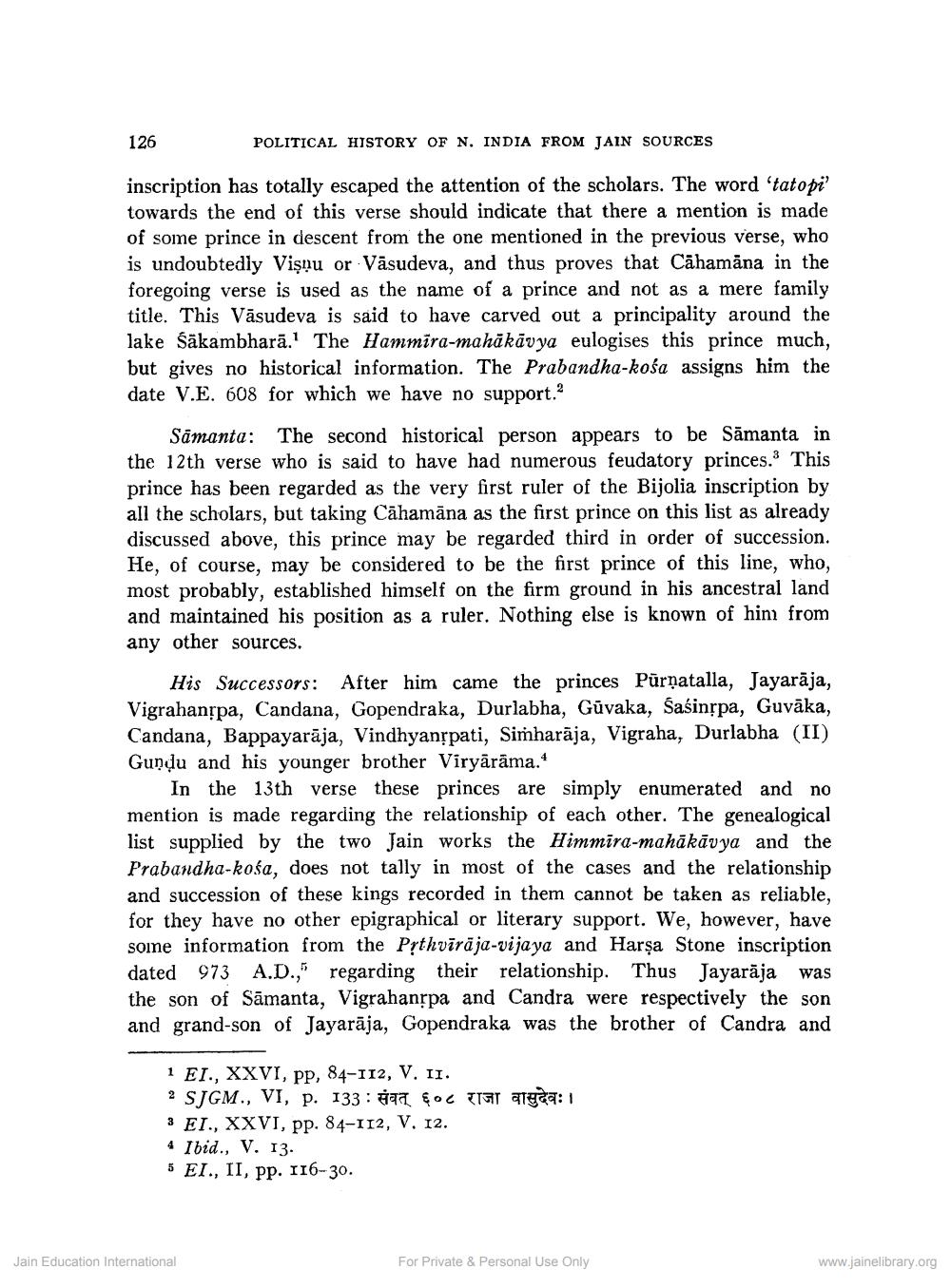________________
126
POLITICAL HISTORY OF N. INDIA FROM JAIN SOURCES
inscription has totally escaped the attention of the scholars. The word 'tatopi' towards the end of this verse should indicate that there a mention is made of some prince in descent from the one mentioned in the previous verse, who is undoubtedly Vişnu or Väsudeva, and thus proves that Cāhamăna in the foregoing verse is used as the name of a prince and not as a mere family title. This Vāsudeva is said to have carved out a principality around the lake Sākambharā." The Hammira-mahākāvya eulogises this prince much, but gives no historical information. The Prabandha-kośa assigns him the date V.E. 608 for which we have no support.
Samanta: The second historical person appears to be Sāmanta in the 12th verse who is said to have had numerous feudatory princes. This prince has been regarded as the very first ruler of the Bijolia inscription by all the scholars, but taking Cāhamāna as the first prince on this list as already discussed above, this prince may be regarded third in order of succession. He, of course, may be considered to be the first prince of this line, who, most probably, established himself on the firm ground in his ancestral land and maintained his position as a ruler. Nothing else is known of hin from any other sources.
His Successors: After him came the princes Pūrņatalla, Jayaraja, Vigrahanspa, Candana, Gopendraka, Durlabha, Gūvaka, Sašinspa, Guvāka, Candana, Bappayarāja, Vindhyanặpati, Simharāja, Vigraha, Durlabha (II) Gundu and his younger brother Viryārāma.
In the 13th verse these princes are simply enumerated and no mention is made regarding the relationship of each other. The genealogical list supplied by the two Jain works the Himmira-mahākāvya and the Prabandha-kośa, does not tally in most of the cases and the relationship and succession of these kings recorded in them cannot be taken as reliable, for they have no other epigraphical or literary support. We, however, have some information from the Pịthvīrāja-vijaya and Harsa Stone inscription dated 973 A.D., regarding their relationship. Thus Jayarāja was the son of Sāmanta, Vigrahanrpa and Candra were respectively the son and grand-son of Jayarāja, Gopendraka was the brother of Candra and
fa
algaa: 1
1 EI., XXVI, PP, 84-112, V. II. 2 SJGM., VI, p. 133: 897 FOC 3 El., XXVI, pp. 84-112, V, 12. 4 Ibid., V. 13. 5 EI., II, pp. 116-30.
Jain Education International
For Private & Personal Use Only
www.jainelibrary.org




